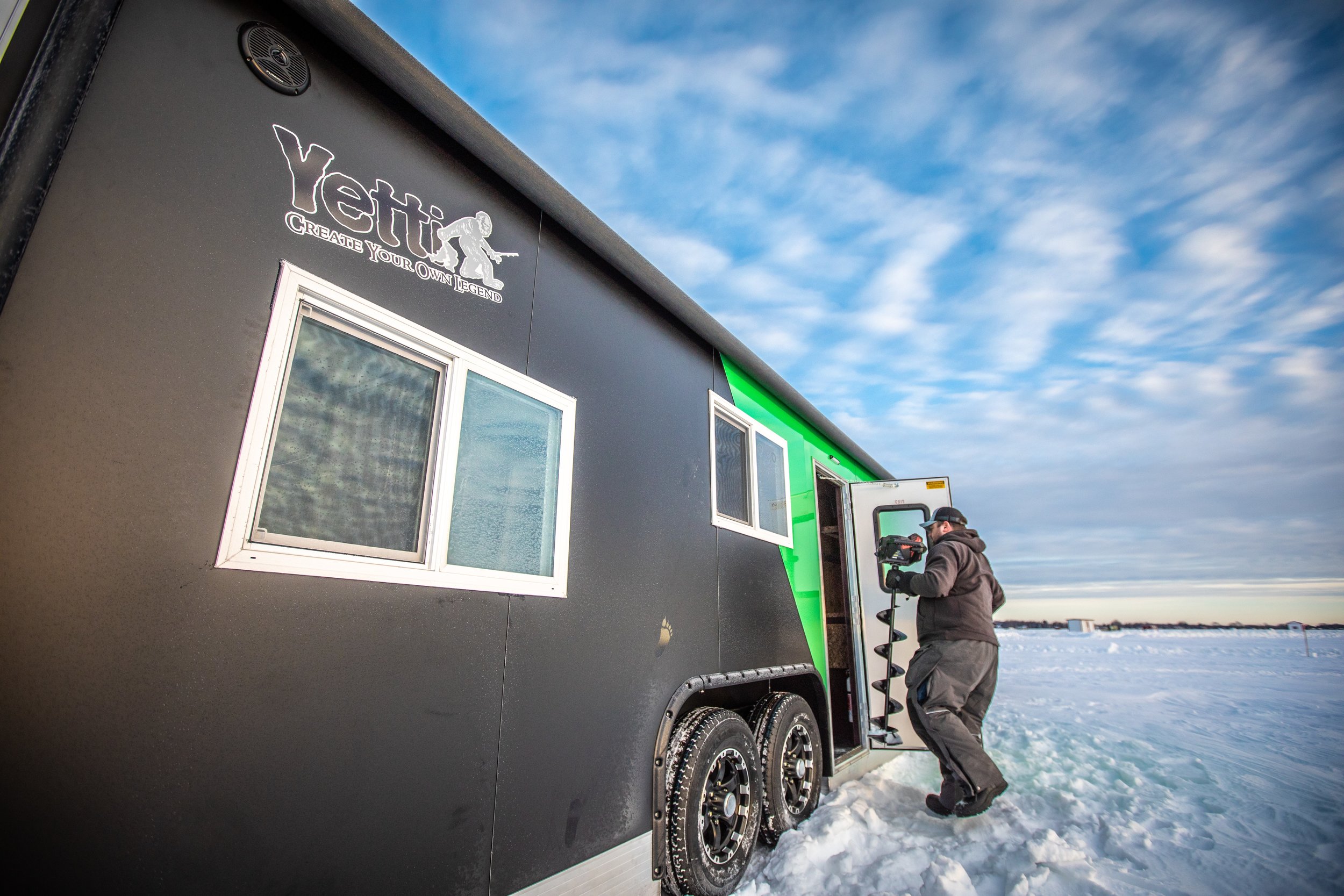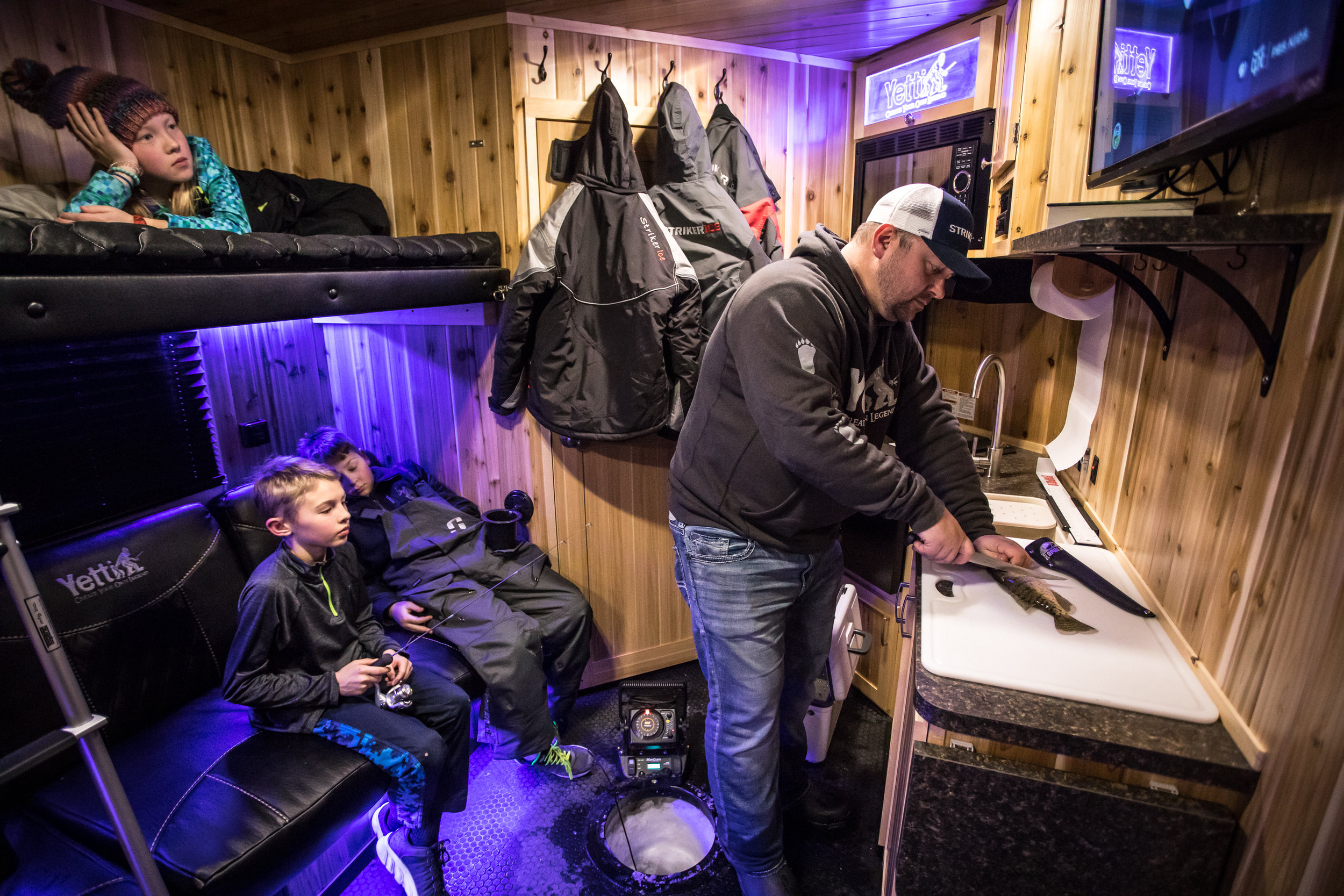I’m staring at some heavy flakes right now out the office window, and like the rest of my ice fishing brethren, I’m thinking about how it’ll impact my ice journeys during the remainder of our season. It’s a reality of February, and especially March, that especially when traveling to different bites across the ice belt that you’ll contend with heavy snow. Mere days ago we had open ice travel on many lakes in central and southern Minnesota, a rarity for this time of year for sure. Now we’re settling in on a more traditional portion of winter that involves dealing with limited travel and the consequences that go with it.
Northern portions of ice-fishing-land had their snow early, around the Christmas Holiday, which is always tricky given the propensity of heavy snow to sink ice and create slush conditions. No matter your machine or manual travel methods, slush is a killer. On a bite in Hackensack around New Years, we high-stepped through a foot of snow, only to stand in inches of water. Drill the ice, and you only make situations worse as water flows onto the ice and under the snow, only to create more of the slush that hampers foot and vehicle travel alike.
So how to best attack conditions like this? Well the answer depends on how you’re fishing, what equipment you have at your disposal, and ultimately the amount of work and effort you’re willing to put into the finding vs. the fishing. Of course, there’s some shortcuts learned over the years that’ll hopefully help as the snow continues piling on over the winter.
Foot Travel
I’ll start with the toughest portion first, but also the simplest. Advantages lie in this modest mode of ice travel, particularly in the fact that you’ll have to have less gear to haul around. Stuff a light sled with a simple auger, several rods, and a flasher, then carry some small tackle boxes on your person as you trudge to spots. Given your limited range, you’ll be forced to fish more strategically, and this especially applies to how you’ll be accessing spots. Flee from the busy accesses where trucks are streaming onto the lake, and focus on secondary access more associated with first ice. County parks, water that touches public road rights of way, and private access with permission is a great way of going after fish that haven’t seen a lure all winter, or at least since the beginning of winter.
This is also a great time to focus on small bodies of water. You’ll know from the tracks left in snow whether or not it’s been getting pressure, and the smaller the lake, the less deep snow trudging there is by default. This is also a great time to focus on walk-in-access lakes, Scientific and Natural Area accesses, and catch-and-release only lakes like the one I fished a few weeks ago. We drug sleds a ¼ mile through a snowy access, and fished hard through the day, but were rewarded with some quality gills during the last 20 minutes of the day. I live for this kind of fishing.
ATV
The ATV vs. snowmobile debate has raged in online forums and Facebook user groups for many years, and over the years, it’s mother nature that makes the final choice as to what will operate better on the open ice. Most years, an ATV’s effectiveness wanes through February, and especially into March, though ATV chains can extend you a few more weeks. Still, eventually, you’ll high-center and be hung up on the frame by thick snow that no longer allows passage. ATV’s once again have a great late-ice applications as snow melts and opens up lakes a bit in late March and April. While slower than snowmobiles, they’re smoother and typically have better storage solutions for holding your ice gear and keeping it out of the bottom of your sled. That said, during the heart of winter in a snowy season, it’s best to save your frustration and leave the ATVs at home.
Snowmobile
For long pokes and fast travel over deep snow, nothing beats a sled and flip-style fish-house combo. It’s how you need to fish in much of Canada and extreme northern portions of the US. There’s simply too much snow, for too long of the season, to expect good travel with anything else. Still, slush is just as much a killer for snowmobiles as it is any other means of travel.
That’s why I’m a big fan of packing down your fishing area ahead of time with a snowmobile or group of them. Unhitch your shelter, and run back and forth between the access and all around your fishing area. Think of it as laying a track for all of the fishing you hope to do throughout the remainder of your stay. For long trips into the back country, this doesn’t make as much sense for the ride out, but it certainly does once you reach your fishing destination. 10 minutes spent packing down “landing” makes all the difference in the world when hole-hopping the rest of the day, and when you combine your runs with underwater contours from a GPS, you’re effectively marking out your spots before you fish them. That makes drilling, AND fishing a much easier task, so before you ever wet a line you’re increasing the likelihood that you’ll fish longer and better.
Truck (With/Without Wheelhouse)
Vehicles are the most limiting means of travel on ice during these conditions when you think about it, but they’re a necessity if towing a wheelhouse. Unfortunately, they’re also the most dangerous, so good planning on previously scouted roads is a must. This past weekend we avoided a better portion of one lake, and two accesses at another, simply because of unsafe and unproven travel. Be especially mindful of lake neck-down areas. So often there’s flow and thin ice in these areas, even during the coldest dead of winter. Even a path over shallow water can be an expensive date, so consider driving on plowed roads only.
Of course, a buddy with a plow is a huge asset in this instance. So is a resort with a plow-driver that will work for cash. A premium during this time of year is uncharted waters that haven’t seen any pressure, so it’s worth some dough for a custom plow-in. Remember however, that your safety is your responsibility alone when it comes to getting out and off of the lake. Too many people consider this plow payment an insurance policy should poor weather, additional snow, or further drifting strand you. My advice? Leave before it gets bad, have a “Plan B,” and check with the driver about fees to get off or out should you decide to stay if conditions suddenly change.
Good tires go a long way on a lake, but realize the limitations of your vehicle when deep snow hangs up on the suspension and frame. Going off-road sounds great from a fishing perspective, but big drifts, slush pockets, and hidden ice chunks can get the best of all who Baja.
Whichever method you choose, be safe out there, focus on fish that haven’t been harassed, and get creative with your bites and access to get after the best of late winter fishing.







